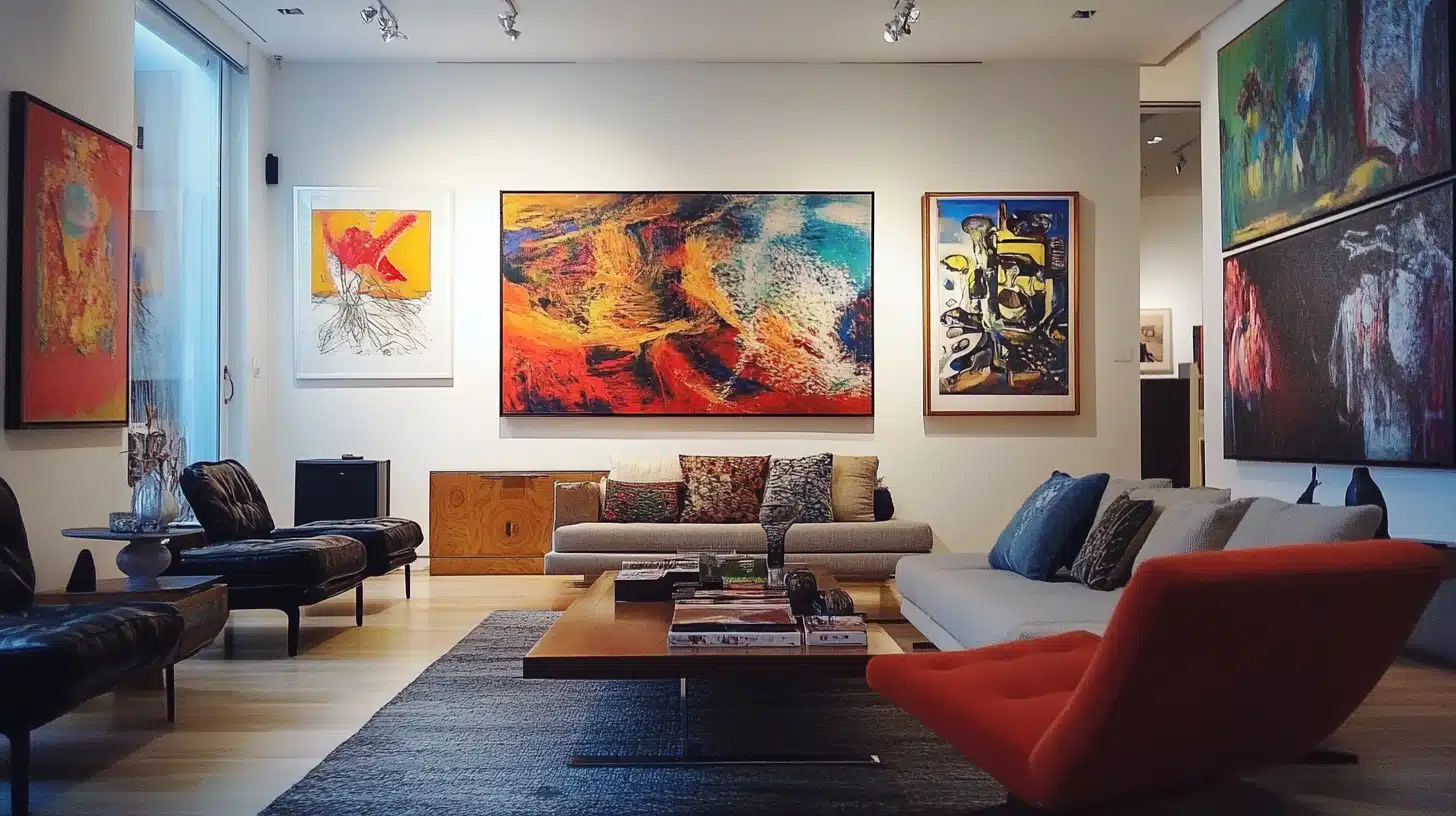Creating a home that feels both inviting and visually pleasing hinges on carefully combining the colors, patterns, and textures that will define your space.
When you balance these elements correctly, they can transform any house or apartment into a haven—one that both provides comfort and reflects your style.
Imagine a thoughtfully curated gallery wall in your living room as a striking focal point and conversation starter or a cozy reading nook becoming your favorite retreat after a busy day.
In these and other parts of your home, a well-chosen palette and a thoughtful mix of designs influence the mood and atmosphere.
However, the process of decorating can sometimes lead to unintended clashes, especially when your enthusiasm for vibrant designs and eclectic tastes results in overdecorating.
It might excite you to select bold patterns and unique pieces, but these choices can quickly turn a room from stylish to chaotic if you don’t approach them mindfully.
Fortunately, by following a few fundamental principles, you can sidestep these potential pitfalls and achieve a cohesive, aesthetically pleasing space that feels both curated and comfortable.
Below are some practical tips to help you avoid common decorating mistakes and guide you toward selecting the right colors and patterns to create a harmonious environment.
Whether you’re starting from scratch or refreshing your space, these insights will help you achieve a balanced look:
Start with a Neutral Base
Every masterpiece begins with a blank canvas, and neutrals serve as an essential starting point for home decor.
Choosing neutral colors—such as soft whites, greys, or beiges—on walls and larger furniture pieces gives you a versatile backdrop that allows other elements to shine.
These colors are timeless, and they also give you the flexibility to introduce bold accents and patterns without overwhelming the space.
Imagine this part of the process as a way to create a cohesive environment where various design elements can coexist harmoniously.
Choose a Color Palette
A consistent color palette can be the thread that ties your entire living space together.
So, instead of randomly picking colors, consider selecting a palette of two to three main hues that complement each other.
This approach ensures that your room has a consistent visual flow, where each element feels connected rather than isolated.
To keep things interesting, play with different shades and tones within your chosen palette so you can add some depth and variety without straying from the overall theme.
Use the 60-30-10 Rule
One of the most effective ways to manage colour distribution in a room is the 60-30-10 rule, a favourite guideline for interior designers.
This means using 60% of a dominant color, 30% of a secondary color, and 10% of an accent color.
The result will be a balanced and visually appealing space where no single color overpowers the others.
With this rule in mind, you can confidently mix and match colors and patterns, knowing that the overall composition will remain harmonious.
Balance Out Bold Patterns
Bold patterns can bring energy and personality to a room, but they’re best used with a careful hand.
Rather than allowing a single vibrant pattern to dominate the space, consider pairing it with more subdued designs that complement rather than compete.
For example, if you have a striking patterned rug, you can offset it with solid-colored cushions or curtains.
This way, the bold pattern can stand out as a feature without being too in-your-face.
Think of Textures as Patterns
Textures can play a big role in adding depth and interest to a space, functioning almost like patterns in their own right.
A mix of textures—such as a plush velvet sofa, a sleek glass coffee table, and a chunky knit throw—can introduce variety and richness without the need for additional colors or busy designs.
So, when designing your space, consider the texture of each item in your décor and consider how to use them to create a layered, tactile experience that prevents the space from feeling flat.
Consider Mixing Patterns in Larger Spaces
In larger rooms, you have more freedom to experiment with mixing patterns.
The extra space gives you more visual real estate, so you can combine different designs without overwhelming the eye.
However, the key to success is maintaining a unified theme through color, style, or scale.
This technique can add interest and variety to a large space without making it too busy.
When In Doubt, Try Stripes and Geometrics
Stripes and geometric patterns are versatile choices that work well in almost any setting.
Their clean lines and structured forms make any room look more modern and orderly, so they’re reliable go-to options when you’re unsure how to mix and match different elements.
Stripes can elongate walls or furniture, while geometrics can introduce a contemporary flair.
Don’t hesitate to fall back on these patterns when you want to add visual interest but want to avoid the risk of clashing with other designs.
The key to successful decorating lies in making mindful choices that reflect your style while working well together.
Strive for balance, whether working with textures, patterns, or colors, and you’ll achieve the stylish home you’ve always wanted before you know it.








